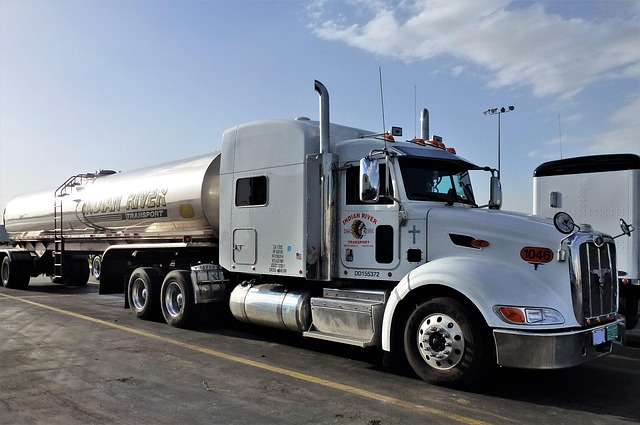Looking to register your car in California? This comprehensive guide walks you through every step, ensuring a smooth process. From understanding key requirements for vehicle registration in California to navigating the crucial VIN (Vehicle Identification Number) verification process, we’ve got you covered. We’ll also detail necessary documents, appropriate registration types, and how to pay fees, culminating in your receipt of official registration papers.
- Understand California Car Registration Requirements
- Gather Necessary Documents for VIN Verification
- Perform Vehicle Identification Number (VIN) Check
- Choose an Appropriate Registration Type and Fee Payment
- Submit Application and Receive Your Registration Papers
Understand California Car Registration Requirements

Before registering your car in California, it’s crucial to understand the state’s specific requirements. One key aspect is ensuring your vehicle has undergone a valid vin verification process. This involves checking the Vehicle Identification Number (VIN) for any discrepancies or signs of theft. In California, this often includes an inspection by a qualified professional using tools like a mobile vin verifier.
The state requires accurate and up-to-date information for all registered vehicles. This means providing detailed data about your car, including its make, model, year, and specific features. Additionally, proof of insurance is mandatory when registering, ensuring your vehicle is covered in case of any accidents or damages. A vin inspection plays a vital role in this process by confirming the legitimacy of your vehicle’s history and identity.
Gather Necessary Documents for VIN Verification

To initiate the car registration process in California, you’ll first need to gather all the essential documents for VIN (Vehicle Identification Number) verification. This crucial step ensures that your vehicle meets safety and legal standards. For a hassle-free experience, consider using mobile vin verification or a mobile vin inspection service. These convenient options allow professionals to inspect your car at your location, saving you time and effort.
Among the critical documents required are your vehicle’s registration certificate from the previous state (if applicable), proof of insurance, and a valid driver’s license. Additionally, a completed California Vehicle Registration application form is necessary. Don’t forget to carry any relevant maintenance records or repair receipts, as these may be requested during the inspection. Ensure all paperwork is up-to-date and accurate to streamline the registration process.
Perform Vehicle Identification Number (VIN) Check

Before you start the registration process, it’s crucial to perform a Vehicle Identification Number (VIN) check. This step is essential for ensuring that the vehicle you’re planning to register is legitimate and has not been reported stolen or had any outstanding issues. A mobile VIN verifier can be used to conduct this inspection conveniently. By inputting your vehicle’s unique VIN into the application, you gain access to detailed information about its history, including previous owners, maintenance records, and any accidents.
A vin inspection is a simple process that allows you to verify the vehicle’s authenticity in just a few minutes. This is particularly important in California, where strict regulations govern vehicle registration. Using a mobile VIN inspection service can save you time and provide peace of mind, ensuring that your car is ready for the roads legally and safely.
Choose an Appropriate Registration Type and Fee Payment

When registering your car in California, it’s crucial to choose the right registration type based on your vehicle’s age and intended use. The state offers various options, from standard registrations for personal vehicles to specialized types for classic cars or commercial use. Carefully consider your needs and select the appropriate category to ensure accurate fees and a smooth registration process.
After selecting your registration type, you’ll need to pay the associated fee, which varies depending on the category chosen. California allows for convenient payment methods, including online, by mail, or in person at a DMV office. Some registration types may also offer the option of a mobile vin inspection or verification service, providing added convenience and flexibility during the registration process. Remember to utilize these services if available to streamline your experience.
Submit Application and Receive Your Registration Papers

After completing your vehicle’s inspection, it’s time to submit the necessary paperwork. This involves filling out a registration application form, which can be done online or at a California Department of Motor Vehicles (DMV) office. You’ll need to provide key details about your car, such as its make, model, year, and the current odometer reading. Along with this, you must include proof of insurance and payment for the registration fee.
Once submitted, the DMV will conduct a VIN verification process using a mobile vin verifier or through a vin inspection to ensure the vehicle’s information matches the records. Upon successful validation, they will issue your registration papers, which includes a new license plate and registration sticker. These documents are essential for legal vehicle operation in California, so ensure you receive them promptly after submission.
Registering a car in California involves understanding specific requirements, gathering essential documents, and completing a VIN verification process. By following these steps, from identifying the correct registration type to submitting your application, you’ll be on your way to securing your vehicle’s registration papers. Remember, accurate VIN verification is key to ensuring compliance with state regulations, so take this step seriously for a smooth registration experience.
